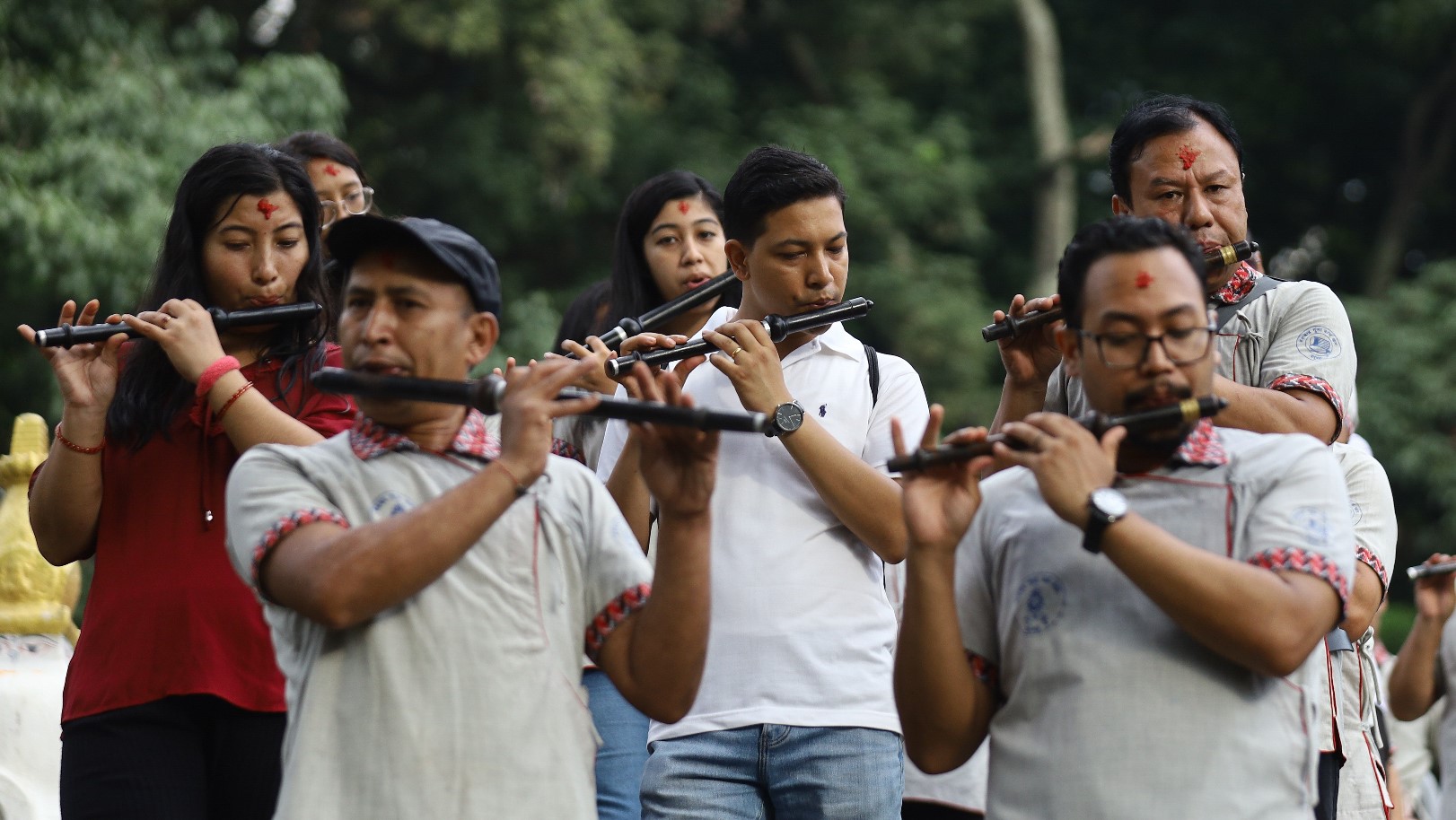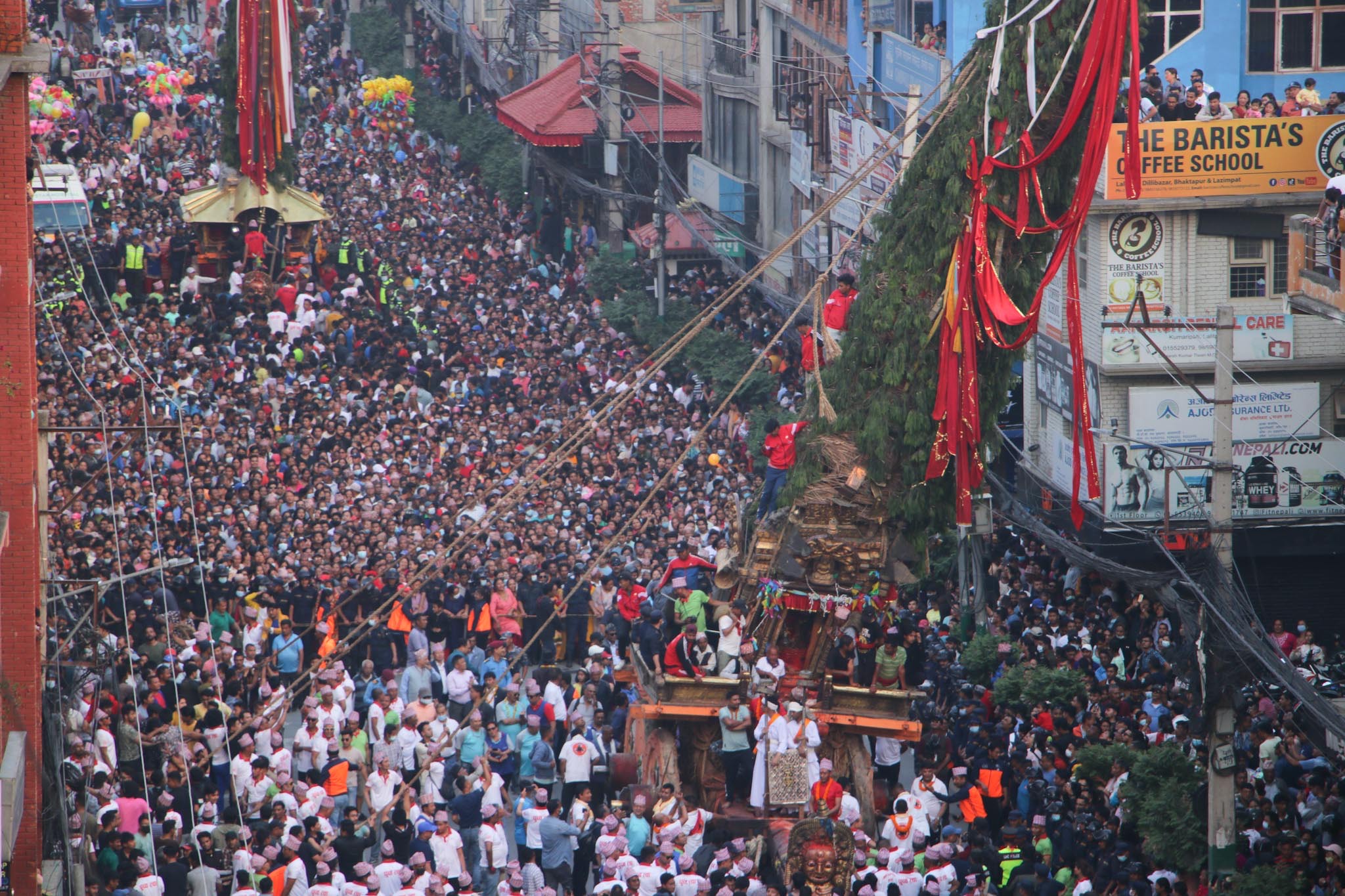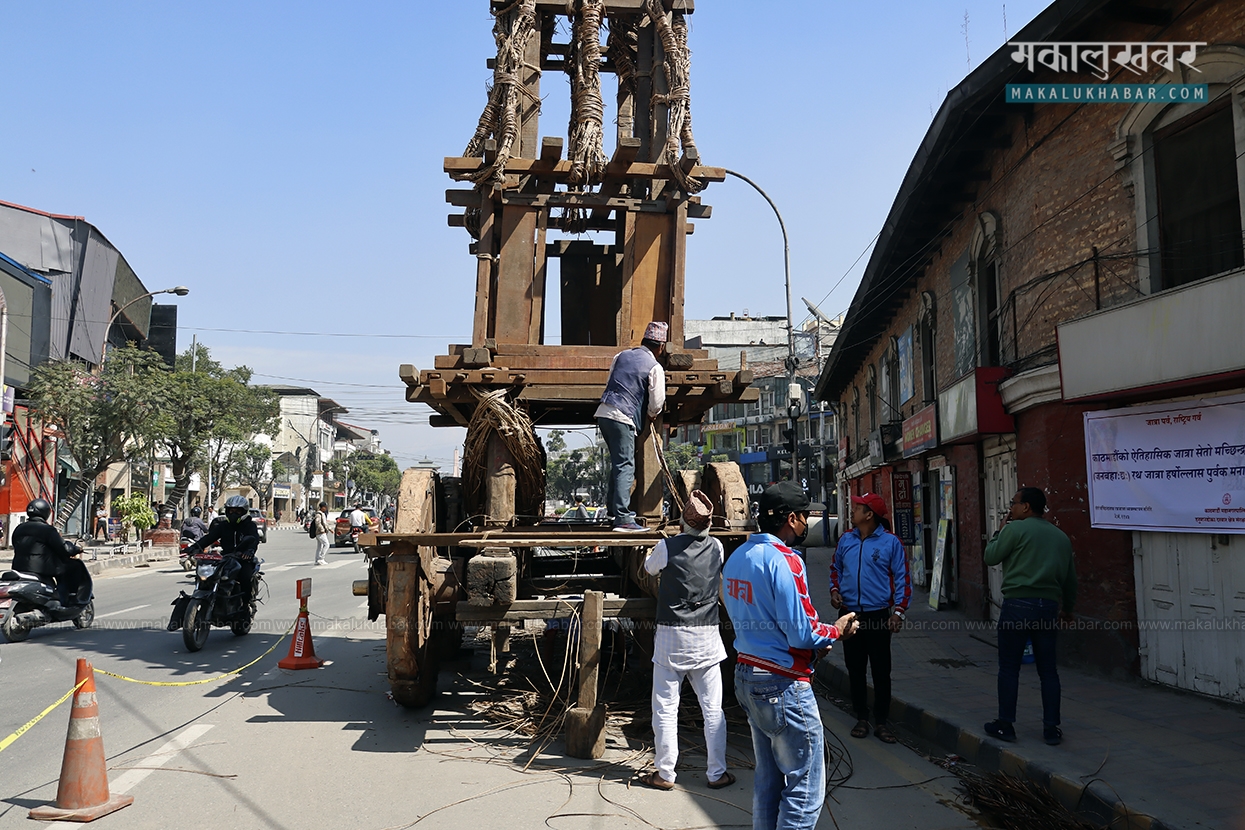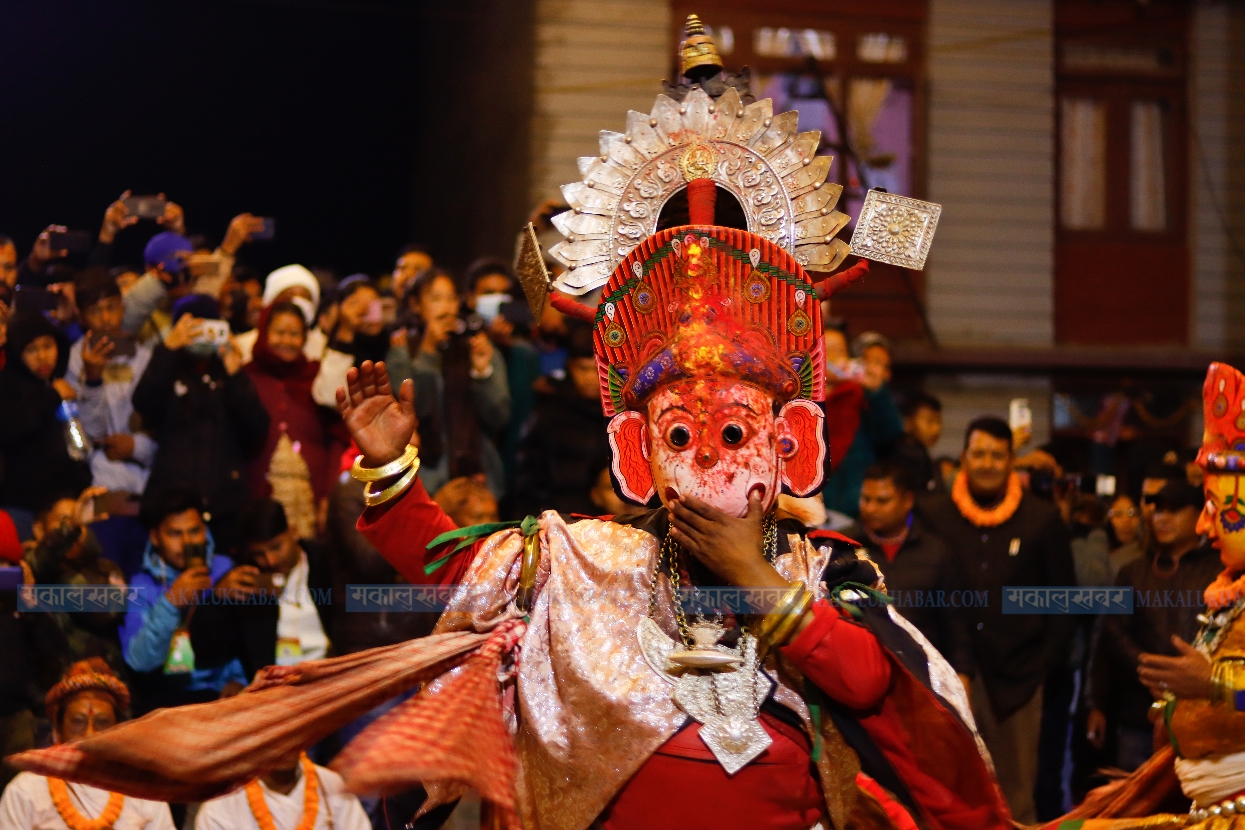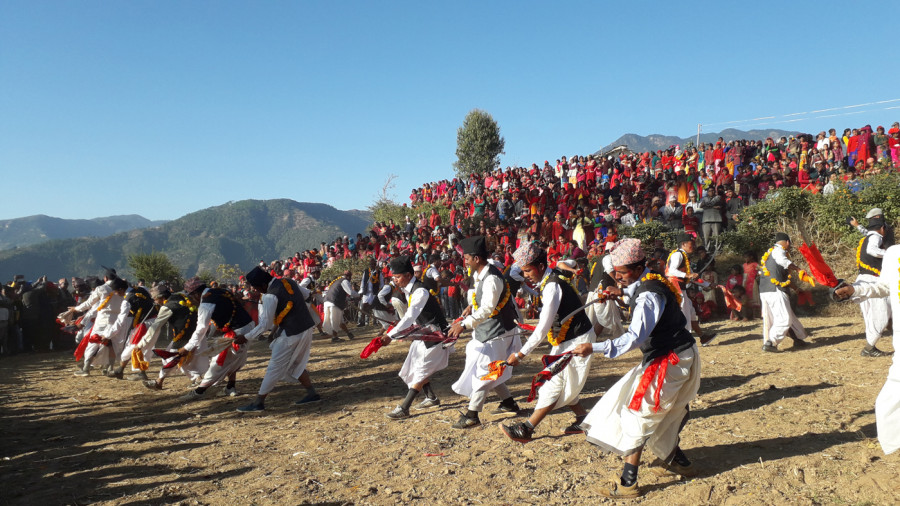Teej festival being observed across country
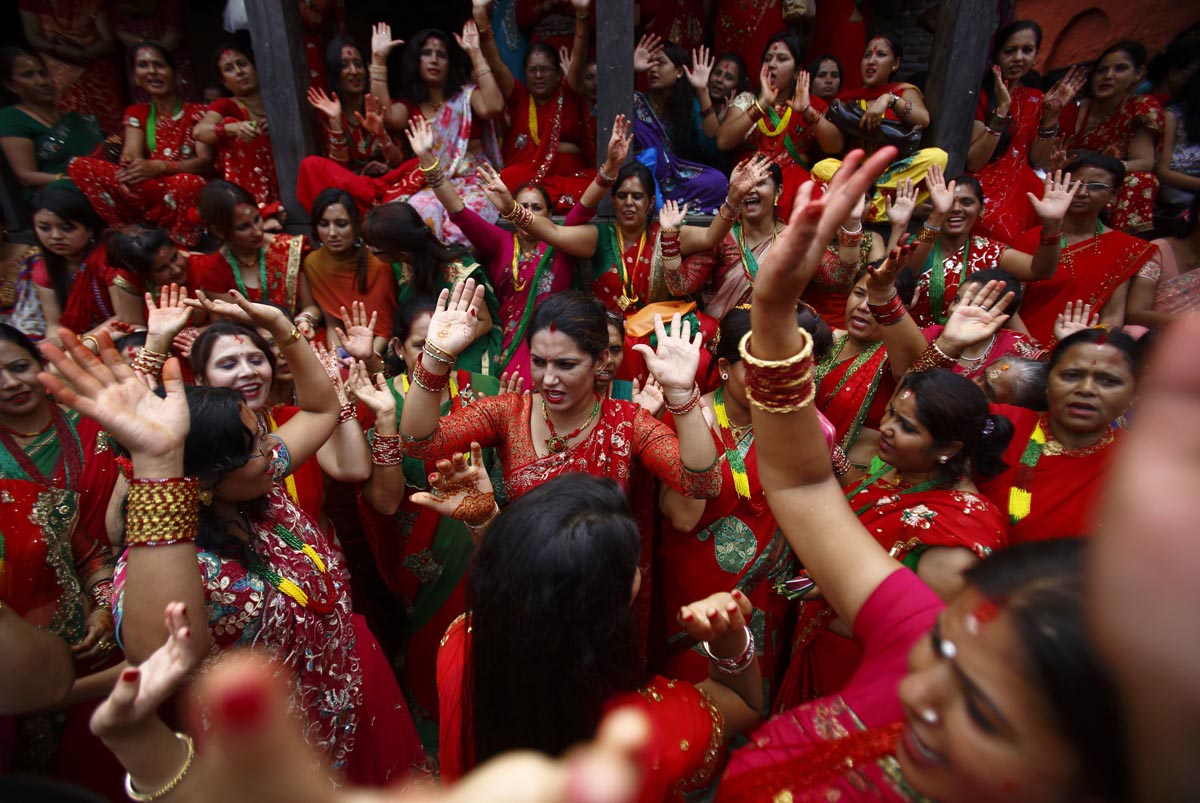
ITAHARI: SEPT. 9 – Teej is the generic name for a number of Hindu festivals that are celebrated by women. Haryali Teej and Haritalika Teej welcome the monsoon season and are celebrated primarily by girls and women, with songs, dancing and prayer rituals. The monsoon festivals of Teej are primarily dedicated to Parvati and her union with Shiva.
Women often fast in celebration of Teej. Haritalika Teej is celebrated in all parts of Nepal and most of the parts of North India (Uttar Pradesh, Madhya Pradesh, Uttarakhand, Darjeeling, Sikkim). Teej festivals are traditionally observed by women to celebrate the monsoons during the months of Shrawan and Bhadrapada in the Hindu calendar. Women often pray to Parvati and Shiva during Teej.
First day
The first day of Teej is called Dar Khane Din. On this day the women assemble at one place in their finest attire and start dancing and singing devotional songs. Amidst all this, the grand feast takes place. What is unusual about this day is that the feast is hosted by men. Women, who work hard throughout the year, do not have to do anything that day.
That is the day for them to embellish themselves in sorha singaar (makeups) — dressing up and using make-up to the full extent, indulge in good food, and dance. Oftentimes, because women are invited by multiple brothers for the feast, they try to dance off some food before they are ready to eat more. The food served is supposed to be rich and abundant.

This is probably the only day in a year that allows women full freedom of expression. Consequently, women have traditionally used this occasion to express their pains and pang in the songs they sing while dancing. With the advancement of communication and awareness, women these days use this occasion to voice their concerns about social issues and discrimination against women. The jollity often goes on till midnight, after which the 24-hour fast starts.
Second day
The second day is the day of fasting. Some women don’t eat or drink food and water while others drink liquids and eat fruit. The fasting is observed by married and unmarried women. Married women abstain strictly from food and drinks with a belief that their devotion to the gods will be blessed with longevity, peace and prosperity of their husband and family. Unmarried women observe the fast with the hope of being blessed with a good husband.
They dress gaily and visit a nearby Shiva temple singing and dancing on the way. The Pashupatinath Temple gets the highest number of devotees. At the temple, women circumambulate the shiva lingam, which symbolizes Shiva, offers the praying with flowers, sweets and coins.
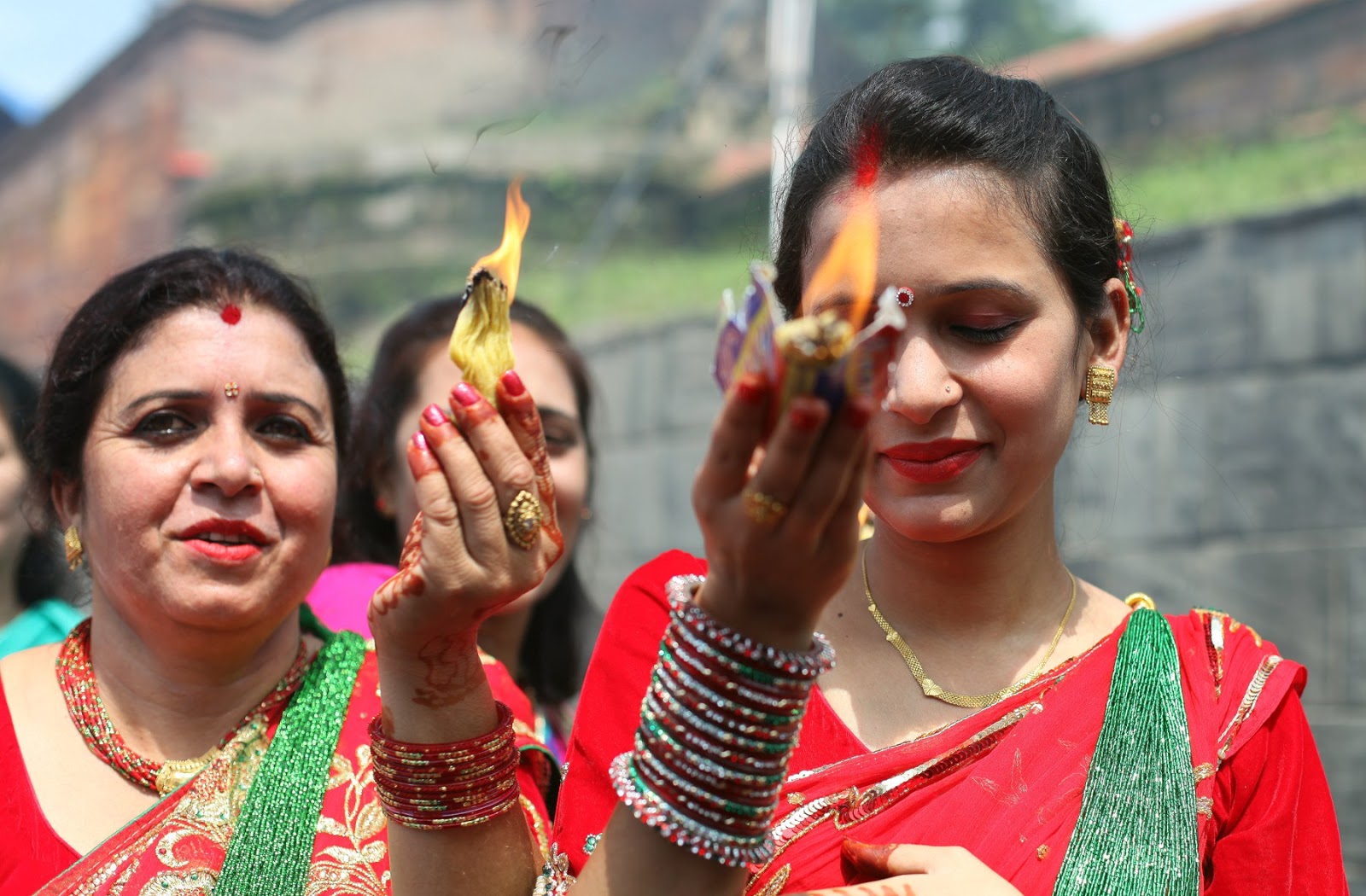
The main puja (religious ceremony) takes place with offerings of flowers, fruits, etc., made to Shiva and his wife Parvati, beseeching them to grant their blessing upon the husband and family. The important part of the puja is the oil lamp which should be alight throughout the night. It is believed that the light of an oil lamp all night will bring peace and prosperity to the husband and family.
Third day
The third day of the festival is Rishi Panchami. After the completion of the previous day’s puja, women pay homage to seven saints or sages, offer prayers to deities, and bathe with red mud found on the roots of the sacred datiwan bush, along with its leaves.
The Rishi Panchami revolves around the purity of women. It is a time when women cleanse themselves of the possible “sin of touching a man during menstruation.” During this festival, which occurs two days after the Teej, the women participate in ritual baths and puja (worship). One of the defining characteristics of the Teej Festival is the songs the women sing.

Traditionally, these songs emphasized the subservient role of women in Nepalese society in addition to reinforcing the traditional Hindu ideology of gender relations. Within the past few decades, as Nepal and the surrounding area experienced rapid development and modernization, the Teej songs have become more of a critical commentary on gender relations from women’s perspectives. These songs “extend the women’s thoughts and experiences of hardships from an intimate conversation to a public setting”. The Teej songs allow women to effect change in their respective societies by giving them a public voice.
Religious Beliefs
Teej Festival is believed to have started in the Satyayuga in the belief that Parvati, the daughter of the Himalayas, got husband Lord Mahadev as a gift by doing penance in Gaurighat. Parvati told her friends about her problem when her father Himalayas tried to marry her off to Vishnu against her wishes.
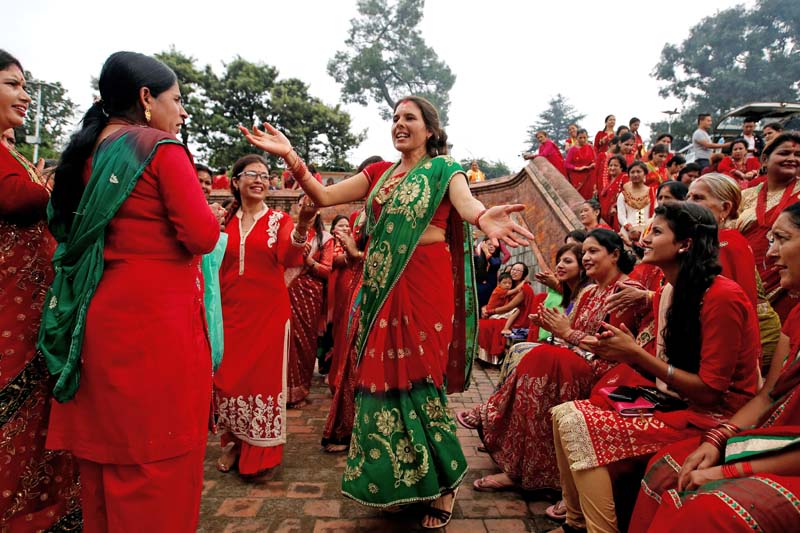
The Haritalika Teej festival is also celebrated to remember the reunion of Shiva and Parvati, the day when Shiva accepted Parvati as his wife. Parvati fasted and was austere for many years and was accepted by Shiva as his wife in her 108 birth.
Observance Haritalika Teej in Nepal
Dedicated to Parvati, commemorating her union with Shiva, the festival is celebrated for the well-being of spouses and children and the purification of one’s body and soul. The festival is a three-day-long celebration that combines sumptuous feasts as well as rigid fasting.
Teej is celebrated by a woman, for the long life of her husband and the long and firm relationship between them in this life and all the lives to come. It is particularly celebrated by women from various castes of Nepalese society, particularly the Bahun, Chettri, Magars, Kiratis and others, on the third day after the new moon of the month of Bhadra (mid-August to mid-September).
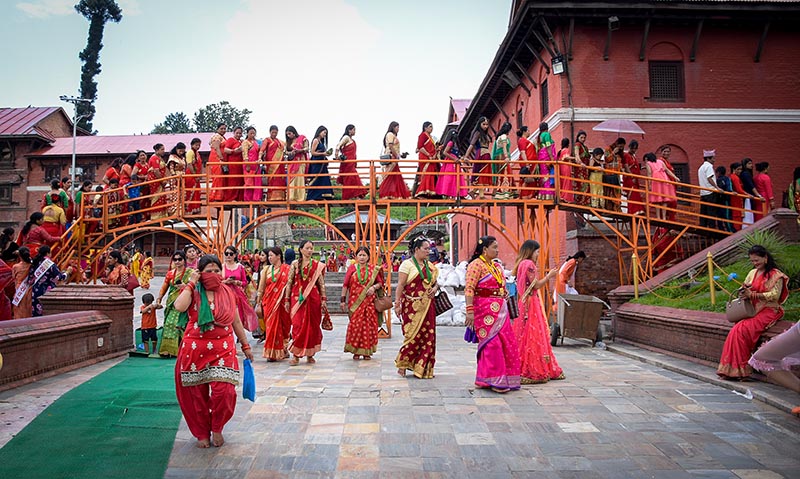
Amongst some communities it is viewed as a “festival of sisterhood”, Teej has traditional and modern values as a festival of celebrating good times with siblings. Although it looks like it is a celebration of sisterhood because when married women get a rare chance to meet with sisters and friends from their birthplace, there is a strong role of brothers to celebrate the festival as they are to call their sisters on this auspicious occasion and cook special food for their sisters, and all the girls enjoy time doing makeup to look the best and dance to forget the pain they get from their in-laws, which is expressed in the form of folk songs with a particular rhythm.
This Year Teej Celebration
The Pashupatinath temple will not be opened on the occasion of Teej festival this year as well. The Pashupatinath temple has been closed since the second week of April.

Even though the Pashupatinath temple is closed, devotees can come to the Pashupatinath area, said Dr Milan Kumar Thapa, member secretary of the Pashupati Area Development Trust (PADT). The fund has called for mandatory wearing of masks and maintaining physical distance while coming to Pashupati area.
Photos Source:- Google
(With the help of news agencies)






